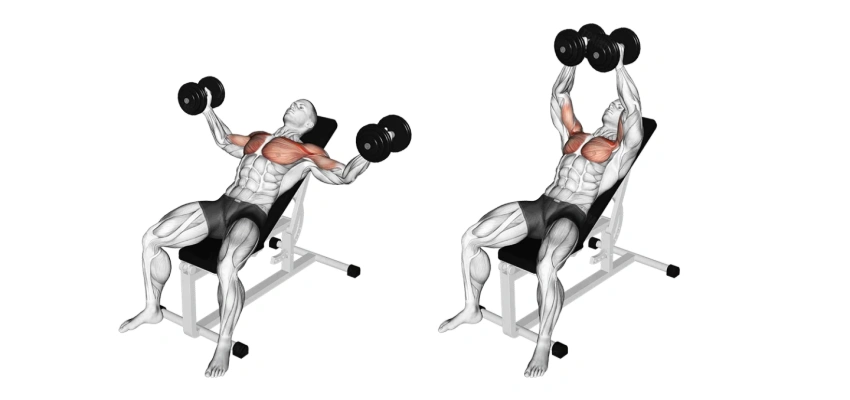Incline dumbbell curl is one of the best exercises for targeting your biceps. Unlike regular curls, the incline version puts your arms in a position that stretches the biceps more, allowing for better muscle engagement. This exercise is great for anyone aiming to build stronger, more defined arms. Let’s take a look at how to perform it properly and what makes it so effective.
What is the Incline Dumbbell Curl?
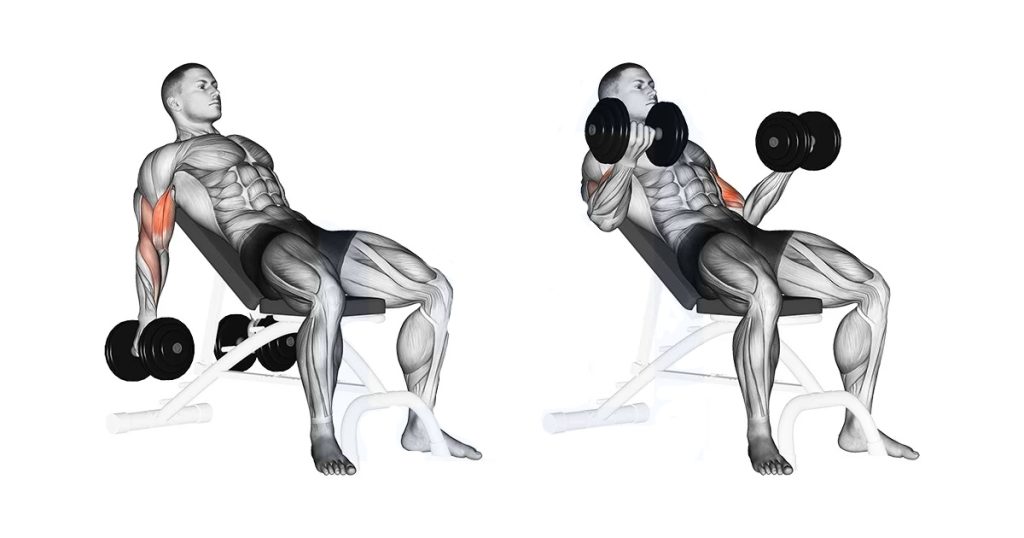
The incline dumbbell curl is a bicep exercise performed on an incline bench. It targets the long head of the biceps more effectively by placing the arms in a stretched position. This variation helps reduce shoulder involvement, focusing the work on the biceps for better muscle engagement.
How to Perform the Incline Dumbbell Curl
- Set Up the Bench
Set the bench at a 45–60 degree angle. Sit back with a dumbbell in each hand and let your arms hang down. - Grip the Dumbbells
Hold the dumbbells with your palms facing forward. Keep your grip firm but relaxed. - Curl the Weights
Curl the dumbbells upwards, focusing on squeezing your biceps. Keep your elbows stationary. - Lower the Weights
Slowly lower the dumbbells back to the starting position, maintaining control and feeling the stretch in your biceps.
Incline Dumbbell Curls Variations
The incline dumbbell curl can be modified in different ways to target your biceps from various angles, activate different muscle fibers, and add variety to your arm training. Here are a few effective variations that you can incorporate into your routine:
Incline Hammer Curl
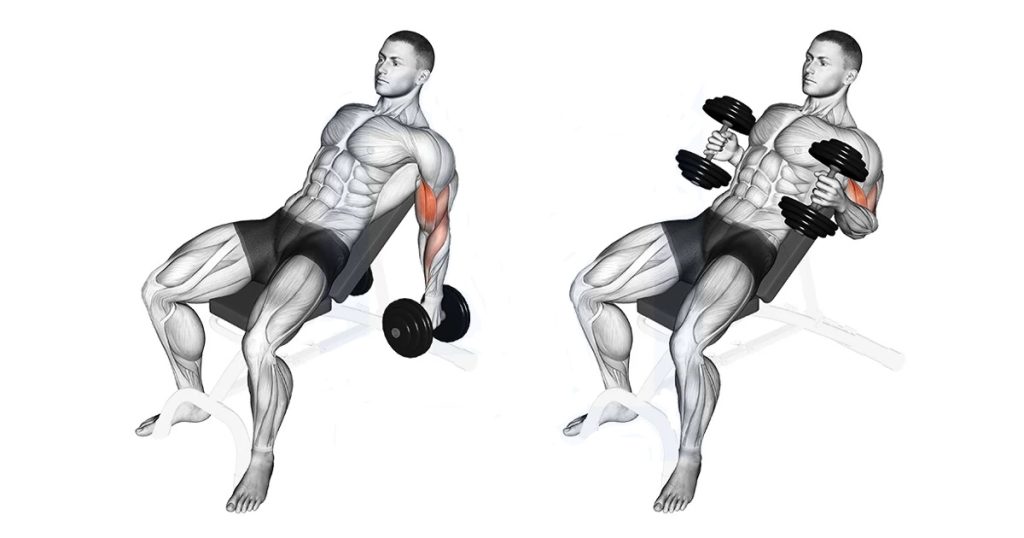
- In this variation, you hold the dumbbells with a neutral grip, palms facing each other.
- The neutral grip shifts the focus to the brachialis muscle, which lies under the biceps.
- This variation also engages the forearms more, helping to build overall arm thickness and strength.
Dumbbell Prone Incline Curl

- For this variation, lie face down on an incline bench with a dumbbell in each hand.
- The prone position keeps your upper arms still, ensuring maximum isolation of the biceps.
- This variation allows for a more intense stretch and contraction at the top of the movement, focusing heavily on the biceps.
Incline Zottman Curl
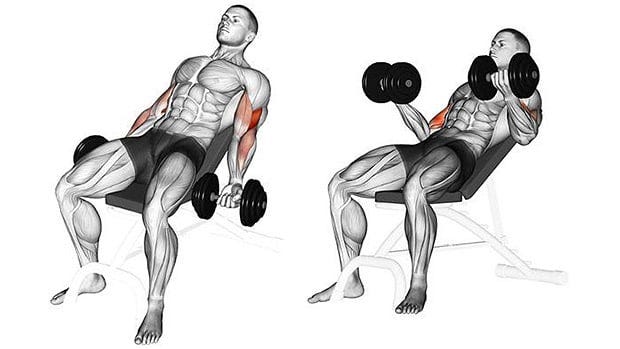
- Hold the dumbbells with a regular grip (palms up) at the start.
- Curl the weights up, then rotate your wrists at the top to a palms-down position on the way down.
- This rotation engages both the biceps and forearms, providing a well-rounded arm workout and improving both strength and muscle definition.
Incline EZ Curl
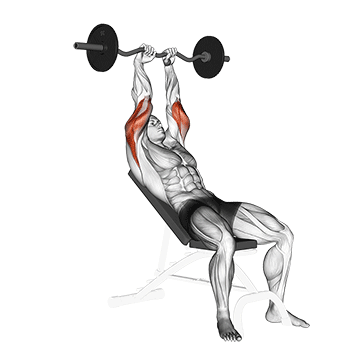
- Use an EZ curl bar instead of dumbbells for this variation.
- The EZ bar allows for a more comfortable grip, reducing wrist strain.
- This variation activates the biceps and forearms slightly differently due to the angle of the bar, adding variety to your workout.
How to Incorporate Incline Dumbbell Curl into Your Workout
To maximize the benefits of the incline dumbbell curl, it’s important to use it effectively in your routine:
- Use 8–12 Reps per Set
Stick to 8–12 reps for muscle growth. This range is ideal for building size and strength in your biceps. - Pair with Compound Exercises
Combine the incline curl with other bicep exercises like barbell curls to target your arms from different angles. - Don’t Overtrain
Include the incline dumbbell curl 2–3 times a week, allowing enough recovery time between sessions.
The incline dumbbell curl is a fantastic exercise to isolate and grow your biceps. By incorporating it into your workout routine, you can target the long head of the biceps, improve arm definition, and enhance overall muscle strength. Whether you’re a beginner or advanced lifter, this exercise can help take your arm training to the next level.
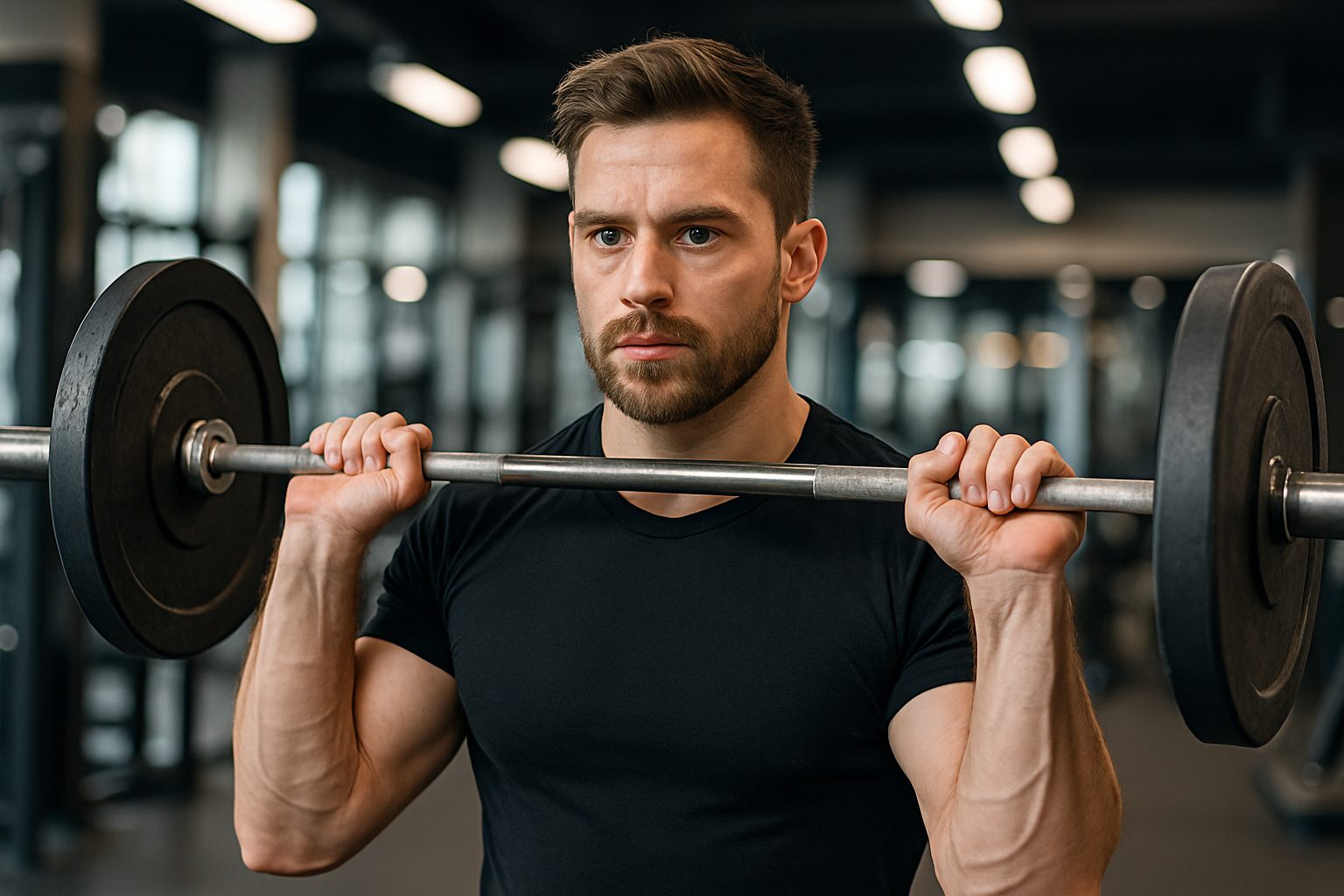
I’m Riley Williams, an editor for Leadman Fitness where we engineer bespoke strength equipment tailored to unique training goals. My expertise lies in home gym solutions, mobility tools, and injury-prevention gear, shaped by 8 years as a strength coach and rehab specialist. I know how subtle design flaws—a knurling pattern that blisters hands or a bolt that loosens mid-session—can derail progress.
I bridge the gap between our production team and everyday athletes: surveying garage gym owners, analyzing wear patterns on returned gear, and pressure-testing prototypes with physical therapists. My content cuts through marketing hype, focusing on practical fixes—whether you’re retrofitting a basement gym or sourcing commercial equipment that survives 24/7 use. If it’s in our catalog, I’ve stress-tested it myself.
